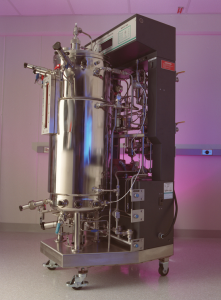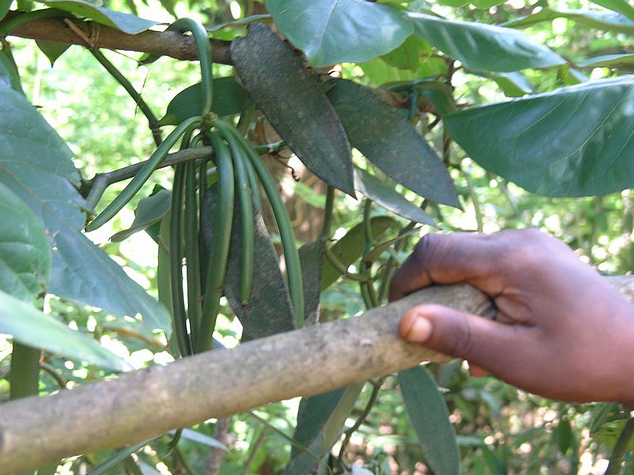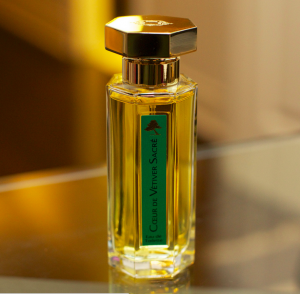
Synthetic Biology is a more extreme form of genetic engineering. Unlike older methods of genetic engineering, synthetic biology techniques give companies fine-grained control over strands of DNA, one of the molecules that carry genetic information. This allows synthetic biologists to create sequences that have never existed before in any organism, and to splice genetic sequences in ways that have not been available before.
Synthetic biology labs effectively treat DNA as a programming language, and living organisms as machines, creating new forms of life that they can then manufacture using a microscopic equivalent of 3-D printing.
Like traditional GMOs, the products of synthetic biology (SynBio) are unlabelled, virtually unregulated and have not been assessed for impacts on our health or environment. Over 117 organizations have called for a complete moratorium on the release and commercial use of this risky new technology until national governments and international bodies have developed adequate precautionary regulations to govern it. The United Nations Convention on Biodiversity has urged countries to handle this technology with caution.
Despite this, several companies are moving forward with SynBio flavours.
Orange and Grapefruit
Allylix, a San Diego biotech firm, is currently producing an orange flavour called Valencene. Normally extracted from oranges, Allylix’s product comes from a fermentation process fuelled by synthetically modified strains of yeast. According to the company, their synthetically-derived Valencene is already being used in beverages and chewing gum flavors.
Vanilla

An estimated 200,000 people in the global south are involved in the production of vanilla. Vanilla orchids are a climbing perennial plants that typically grow in rainforests. Cultivation is extremely labour intensive, requiring hand pollination of each flower. To produce one kilogram of vanilla, 500 kilograms of vanilla pods must be harvested. In Madagascar, Mexico and Comoros, where farmers produce 75 per cent of the world’s vanilla, cultivation of vanilla provides a livelihood for people who have few economic alternatives.
The market for natural vanilla is valued at around $150 million annually. Evolva, a Swiss synthetic biology company, has announced plans to sell vanillin flavour produced by synthetic organisms in partnership with International Flavours and Fragrances (IFF). Evolva CEO Neil Goldsmith has pitched the plan as providing a sustainable source of vanilla flavouring. However, if the companies succeed at labelling their product as “natural,” the livelihoods of tens of thousands of farmers could be at risk.
• ETC’s case study on Vanilla
• Friends of the Earth’s No SynBio Vanilla campaign
Saffron

Saffron is known for its vivid red/orange hues and rich aroma. The world’s most expensive spice by weight, saffron consists of the dried stigma of the crocus flower. Between 90 and 95 per cent of the world’s saffron is produced in Iran. In 2009/2010, the country’s Khorasan Razavi province exported 57 tons of saffron worth $156.5 million to 41 countries. Saffron’s high price is a result of its labour intensive harvesting; it takes 40 hours of labour to extract enough crocus stigmas by hand to produce one kilogram of the spice. During the harvest, each hectare of crocus flowers provides work to up to 270 people per day.
Until now, there has been no synthetic alternative to Saffron. Evolva, however, is hoping to move the world’s saffron production from the foothills and valleys of Khorasan Razavi to industrial vats of sugar in Brazil. The company started researching how to create organisms that will produce each of the components the give saffron its flavour, aroma and colour. According to the company, it will have synthetic organisms producing a saffron imitation that will hit the shelves by 2015 or 2016.
• ETC’s case study on SynBio saffron
Vetiver

GQ has called it the “perfect natural raw material for a masculine scent.” A distant relation of lemongrass, vetiver oil is known for its musty, woody scent and it fixative qualities, which means it helps a fragrance to last longer after it is applied to the skin. Vetiver can be detected in the “base notes” of many perfumes or colognes (including Chanel No 5), and is used in other cosmetic products as well.
The oil is derived from Vetiver grass, which originated in India, but is grown by farmers in Haiti, Indonesia, China, Japan, India, Brazil and Réunion (a French department in the Indian Ocean). Haiti is the world’s largest producer, and at one point supplied 60% of the world’s vetiver, employing 60,000 people directly and providing much-needed revenues in a country whose unemployment rate topped 40% in 2010. Vetiver is also valued for preventing soil erosion.
Allylix, a “renewable chemicals company” with offices in Lexington, Kentucky and San Diego, announced a product it is calling “epivone” in 2012. Epivone is structurally similar to beta-vetivone, one of the chemicals found in vetiver oil, “for use in fragrance applications.” It estimates the value of the existing market for these fragrances to be “a minimum of $20 million.”
UPDATE: Allylix has been acquired by the Swiss SynBio firm Evolva, and the future of epivone is unclear.
• ETC Group’s case study on vetiver
Other SynBio Products
For more information about these and other SynBio products, check out ETC Group’s synbio case studies.
Leave a Reply
You must be logged in to post a comment.